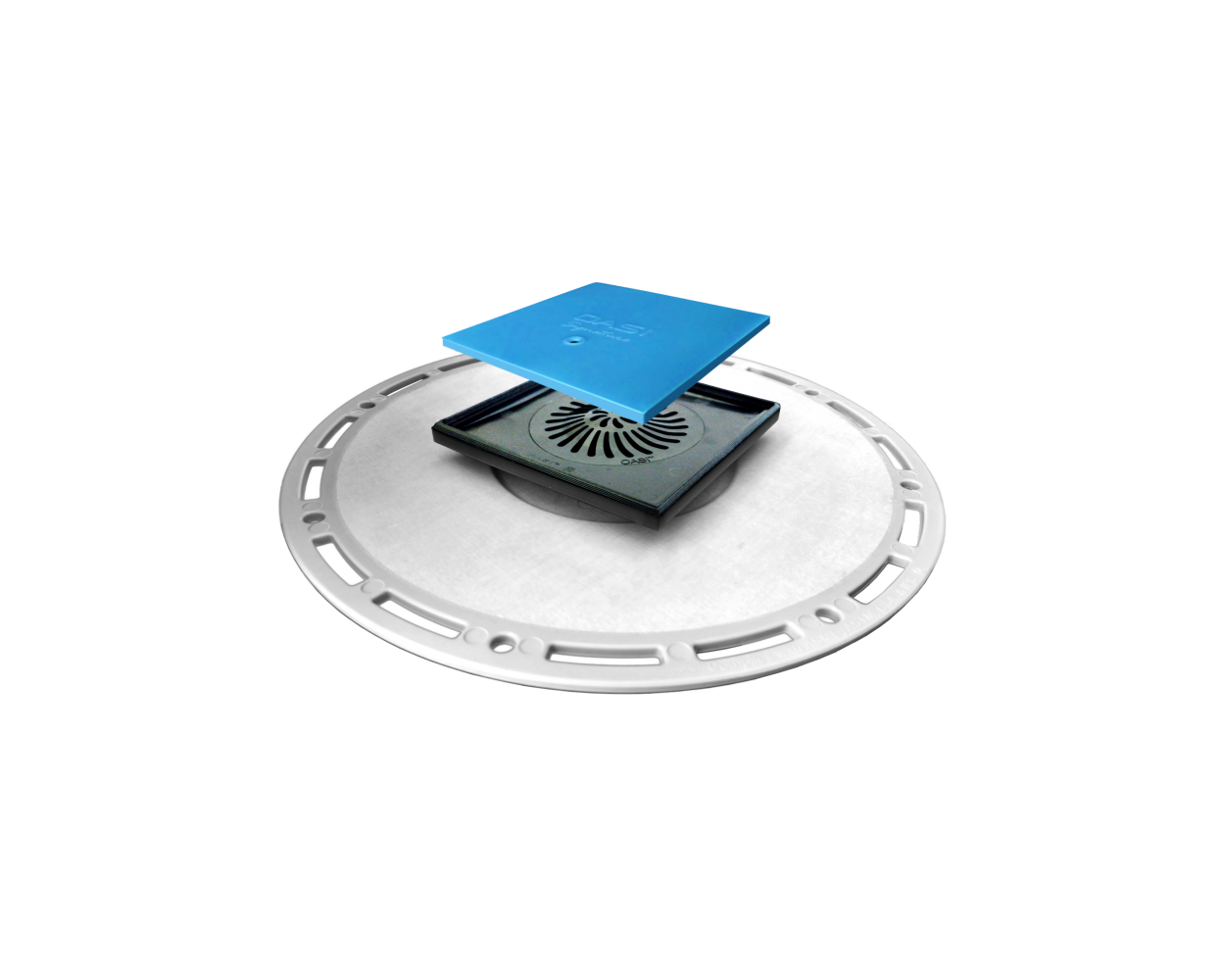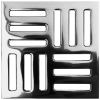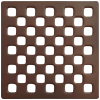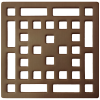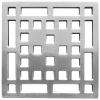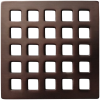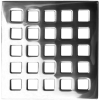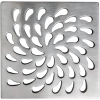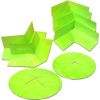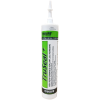Tile Shower Drain
From $105.86 Regular Price $162.86
To $165.82 Regular Price $255.11
In stock
- What is it?
A tile shower drain - if we break down the word - one, it's a drain. So there are many different types of drains and we can break that down, so we're going to see the different types of drainages. Number two - the word shower - this obviously means that it goes in your showering area. Now there are different kinds of showering areas and where they are - we'll get into that - and third one is tile. So tile, does that mean the grate is tile or is this just a shower drain in a showering area that has tile? We will get into that.
So first of all, what is it? I'm going to break down drains just slightly. It's going to be in the next section, so actually I'm going to break down shower pan liner, because we don't really go into that. We go more into drainages than we do showers. So - what is it? Well first of all what we've got to ask ourselves what we need to find out. What we need to look into is what is this for? Where is best line drain products for your shower this? Are you a restaurant and you need to be able to clean and clear out the kitchen? Is this in a home and it's the master or is this a home and it's a second or third bathtub set? Is this an apartment? Is this a condo? Is it an office building with a executives bathroom? Understanding that will allow us to help choose and style what we're looking for and to be able to get in the frame of right and have the right kind of context for what we're trying to do and what we're trying to achieve by reading and looking into this article.
- Types Of Drain And Styles
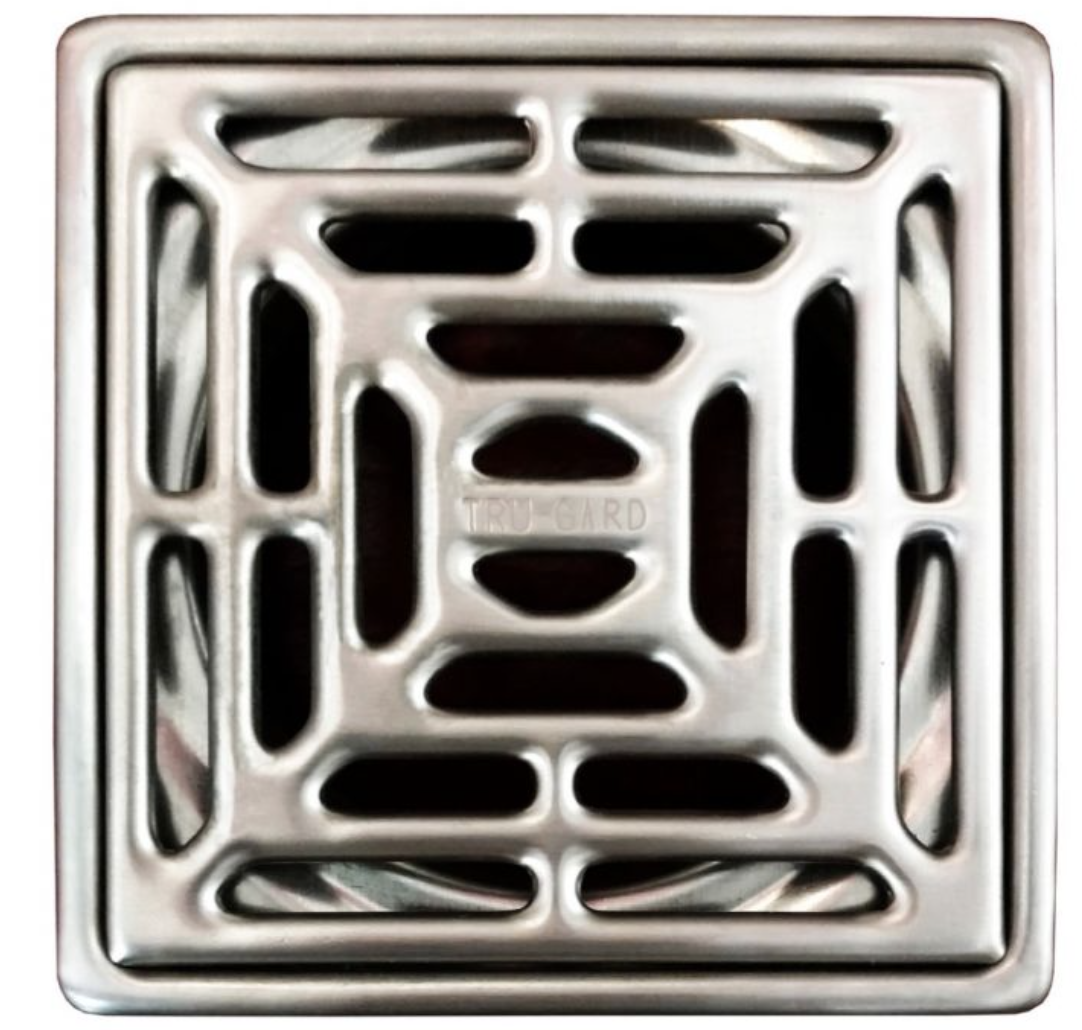 This is going to be the different type of drainages that they are and the different styles that they can come in. So first of all we're just going to start with two different types of drainages. There is going to be a center-like drainage that's a square or a circle but it's a small no bigger than maybe a 4inchX4inch drainage that water flows from all sides of the floor into and then flows out the waste pipe. Okay, so there's that style. The second style is going to be a linear trench drainage style, which is going to be along a narrow type of product that can be in many different lengths, many different thicknesses, but typically it's going to be about a 4-inch width and length's over 24 inches up to 6 feet long, and you can even get into other areas which are trough drainages and we have a full article on what those are and how those are used. If you want more information on trough drainages, look here. So now that we have two different types of drainages kind of laid out, let's talk about the style that they can be used. So based on the topic of this article, they can be tile-able which means you can put a piece of tile in that drainage so now that is what the grate finish looks like. Water will drain around it, but not through it. So that's a nice fancy look if you want to hide the drainage. You could also do that with a linear style. You can tile that full grate and completely make that disappear. It's a very unique style. If done right it can be a very modern look. It can also do a very classical and 4 inch square drains for your shower country style design, depending on the type of materials you're using to fill in the grate. Now that's just if we're relating based on the topic and we're trying to come up with grates that relate specifically to the topic, but there are other styles out there, styles and designs of those grates, that you can select from. You can have different S-style types or it looks like a wave on the grate. You can have squares, checkers. You know, there's ones that look like rain falling through it. There's many different styles that you can have and many different types of drainage bodies that you can have. So understanding - getting back into the first section here - you can start to understand where some of this is going to relate and where you need to know these factors for.
This is going to be the different type of drainages that they are and the different styles that they can come in. So first of all we're just going to start with two different types of drainages. There is going to be a center-like drainage that's a square or a circle but it's a small no bigger than maybe a 4inchX4inch drainage that water flows from all sides of the floor into and then flows out the waste pipe. Okay, so there's that style. The second style is going to be a linear trench drainage style, which is going to be along a narrow type of product that can be in many different lengths, many different thicknesses, but typically it's going to be about a 4-inch width and length's over 24 inches up to 6 feet long, and you can even get into other areas which are trough drainages and we have a full article on what those are and how those are used. If you want more information on trough drainages, look here. So now that we have two different types of drainages kind of laid out, let's talk about the style that they can be used. So based on the topic of this article, they can be tile-able which means you can put a piece of tile in that drainage so now that is what the grate finish looks like. Water will drain around it, but not through it. So that's a nice fancy look if you want to hide the drainage. You could also do that with a linear style. You can tile that full grate and completely make that disappear. It's a very unique style. If done right it can be a very modern look. It can also do a very classical and 4 inch square drains for your shower country style design, depending on the type of materials you're using to fill in the grate. Now that's just if we're relating based on the topic and we're trying to come up with grates that relate specifically to the topic, but there are other styles out there, styles and designs of those grates, that you can select from. You can have different S-style types or it looks like a wave on the grate. You can have squares, checkers. You know, there's ones that look like rain falling through it. There's many different styles that you can have and many different types of drainage bodies that you can have. So understanding - getting back into the first section here - you can start to understand where some of this is going to relate and where you need to know these factors for.
So to tie together what it is and the different types is going to be heavily dependent on the structure around the area that you want to have this placed. Is it in a home? The home - you probably want it to match more your how to install your drain theme of the home. Is it a more luxury, high end home that might be more of a marble and stone and you need your wet area to kind of match that area or that concept or that design? If it's an office building, what does the office look like? It might actually even be a branded product that you need which now you're going to look at custom. So there's that option there - custom means you can customize it to whatever you want. So in an office setting it might be customized to how you know, maybe what it looks like. It depends on where you are. If it's an apartment, you might want to look at - well, is this a high end apartment complex? A high rise? Or is this a low-end apartment complex where I just need something to drainage the water out and I'm not doing anything fancy? And that will then tie into one of the other sections below, getting into a price point. See All Shower Drains So that kind of ties together why you need to know a little bit of the different types and the different styles so that you can kind of match it all together with where you are actually or what you are actually this for.
- Positioning
We're going to be going over positioning. Positioning means where do you want to place? So where do you want the water to drain? Some of the questions that you would ask yourself is do you want it visible? Some people do, some people don't. Some people have selected a really nice design and they want to show it off. Some people want to make sure that it matches their other features in the area - the showerheads, the valves, those different product pieces - and so they want it seen and visible so that they get a warm feeling and they can see that everything matches. However in positioning, you can also hide everything. You can have a shower seat and put the drainage under it. How do you do that? Well, in our shower bench article we go over the different positioning and different styles that you can use to achieve the look that you want. So if you want more information on that, please look here.
But going over this, what it is with hiding the drainages - you can put it under a bench. So you would slope your floor towards that bench and there would be a drainage underneath. Now your bench would have to be up off the floor and have the ability to install the drainage underneath it, and you can have the water flow. Now you're positioning, now you'll be able to hide that and create the style and look that you want of the whole room, not just the piece. Also what comes into positioning is a little bit of a structural thing. Does the area need to be ADA-compliant? Is it handicap accessible? Does it need a curb or can you go curbless or barrier-free or whatever you want to call it? There is nothing to step over when going into the area - it's what I want to relay. You may want like a linear-type style that runs across the whole area that you would use...You know, a wheelchair could easily roll over. Therefore, it now makes it handicap accessible and that goes again back to number one where - What are you using this for? Is this now a retirement home? Are installing a shower drain how to these all apartments? You know, one-floor apartment complex or condos for you know, the elderly? Is this a veterans community and all of their homes need to be handicap accessible? Which is actually one of the jobs that we've done and if you want to look at that story and look at what we were able to do and what we did, please take a look here. So positioning really affects the look, the style, the design and to achieve the right kind of positioning, you need to make sure you're doing your research in design and understanding that it works with the rest of the room. your drain smells bad
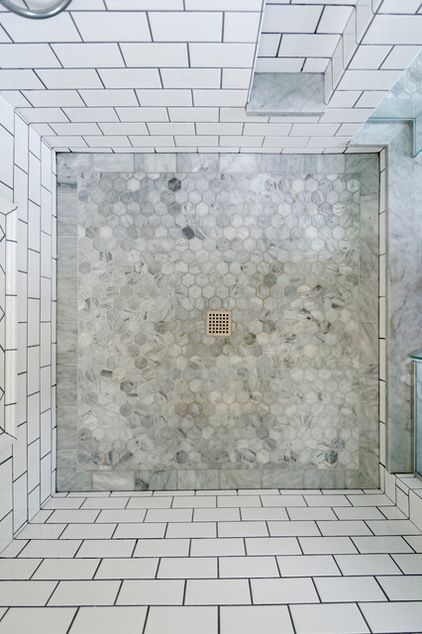
- Price Points
Price point is something I have alluded to a lot in other articles in the sense of it's kind of a trade-off, and not every company has this. You just need to be careful with pricing fallacies and worry more about the material and understanding what type of material you want so you get the quality that you want and then start shopping priced based on the materials and the quality that you already know that you want. You can find a stainless steel you know, three or four high-grade heavy duty product at a medium price range that is also sold for two, three or four hundred dollars more in the high end price range, but it's a branded name. So you can get the same kinds of products in different price ranges that have the same value, right? So we're not comparing plastic to stainless steel, we're comparing stainless steel to stainless steel - three or four of the same gauge, everything like that. You can find that companies just with a brand - and this relates into every area, even electronics and things like this - you will start looking but it's more of a brand name. An Apple iPhone costs more than an Android or a Samsung - why? Well, because it's Apple! However you know, Samsung and those other companies are getting a little bit higher brand recognition as well so they start charging those higher prices also. So you just want to be careful with that and so price point is going to help determine the value.
Again, this now again points back to number one - Where is this going? And I have alluded to it before, high-end, high rise luxury condos or apartments, they're going to have a different quality requirement at a different price point than putting in plastic you know, accessories and plastic pieces. That's just not going to cut it. Everything needs to be metal. It needs to be that high quality product. So the price point they know is going to change but when they shop they can get that same quality for a better price range than just immediately going with the product and with the high price. So along with a high rise luxury apartment it's also the same with a low income apartment complex. Quality stuff may not necessarily be the best items to put into place because they're trench drains for the shower easy to remove, they're easy to break, those kinds of things. A valve may be worth just using plastic instead of a stainless steel, that matches all the other furnishings because well, it's probably going to get broken after each tenant uses it and if you have a one year turnaround you're replacing something every single year, the cost gets super high. So when using high value items, so using a smaller one to cut the cost, is totally understandable. So you want to go with what fits best for you and the price range that works best for you and what you're looking to accomplish. Again, an office building might have a complete different thing. Usually companies have more money and different things, so they can afford to look at and do higher quality things. Again, shopping and getting the best price point for the best value.
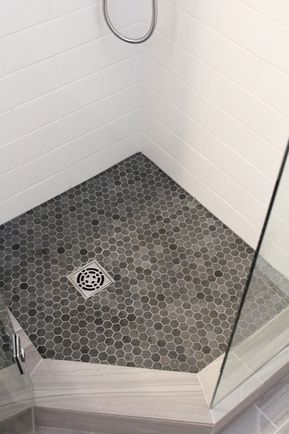
- Waterproofing
So in research, the drainage is one of the leakiest items within any part of the home. So waterproofing is something that very well needs to be understood. Again, this will relate back to number one as well is - Are you doing a high rise? Well if you are that means people live below you and then people that live below you live below them. So if there is a water problem and it's stacking up and draining, then you're going to have a constant problem and it's going to go through multiple floors and be very expensive to fix. The same thing with just regular apartments, but even with a home your second bathroom or your master that's upstairs, if it leaks it's coming down into your kitchen or your living room and ruining your couches and anything like that. So waterproofing is a very strong point that needs to be researched and understood when looking at this type of product and understanding how it plays in all of this. For a more exclusive article in understanding waterproofing, please go here.
So now you want to look for drainages that work with waterproofing. You want to make sure that they have redundancies that keep them from leaking. So if the product fails, there is something, another product, that is ensuring that it doesn't really fail. The product can fail, but it has something to lie back on if it does and you want to take that into consideration when going through any of these products. Make sure it works well with waterproofing and it has a great ability to adapt, it has redundancy to make sure that nothing goes wrong for the long term warranty is a good way to look at it as well.
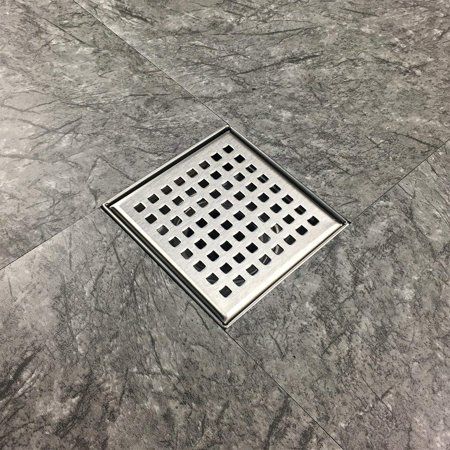
- Benefits and issues
Well, there's going to be a bit of both depending on what you're doing. Higher quality products, lifetime warranties are going to be bigger and better benefits, but if you're also paying for a high value product and you're paying the high value price....You know, is that necessarily a benefit? The benefit is the product, but you could have paid a different price range for the same type of product and actually had a bigger value or a bigger return or a bigger return on your investment (if you will), a bigger benefit for that. So you want to keep those in mind - benefits. You know, like I mentioned warranties. You want to look at the waterproofing and how it works with the whole area continued there. Are you trying to sell the place that you're using this for? Remodeling and you're trying to increase the value? There's a lot of benefits with going with different styles or different types than other ones. A linear style is going to be more or a higher value than just a center circle or square style because of the elegance, the look, the feel. So keep that in mind. Issues are always going to come up when you have lower end products, lower end items and unless you are specifically creating something for a lower end like a lower income apartment complex and you know you need to just spend the minimum price range because you're going to be going through numbers, then that's fine because it works out for the company and it works out for every tenant. They get something nice and new every single time as well. But it's going to have it's own issues. You're not going to be able to have the warranties available, so look into that. Waterproofing plays a bit part in issues and issue handling. Keep that in mind.
In conclusion, just wanted to thank you for taking the time to look into this and read over and understand that there are a lot of situations that can be taken a look at and different design, different aspects, different styles, positioning, price points - and it's all a very big concept that needs to be taken into account when looking and doing a job or anything of that sense. So thanks again. See you in the next article.
